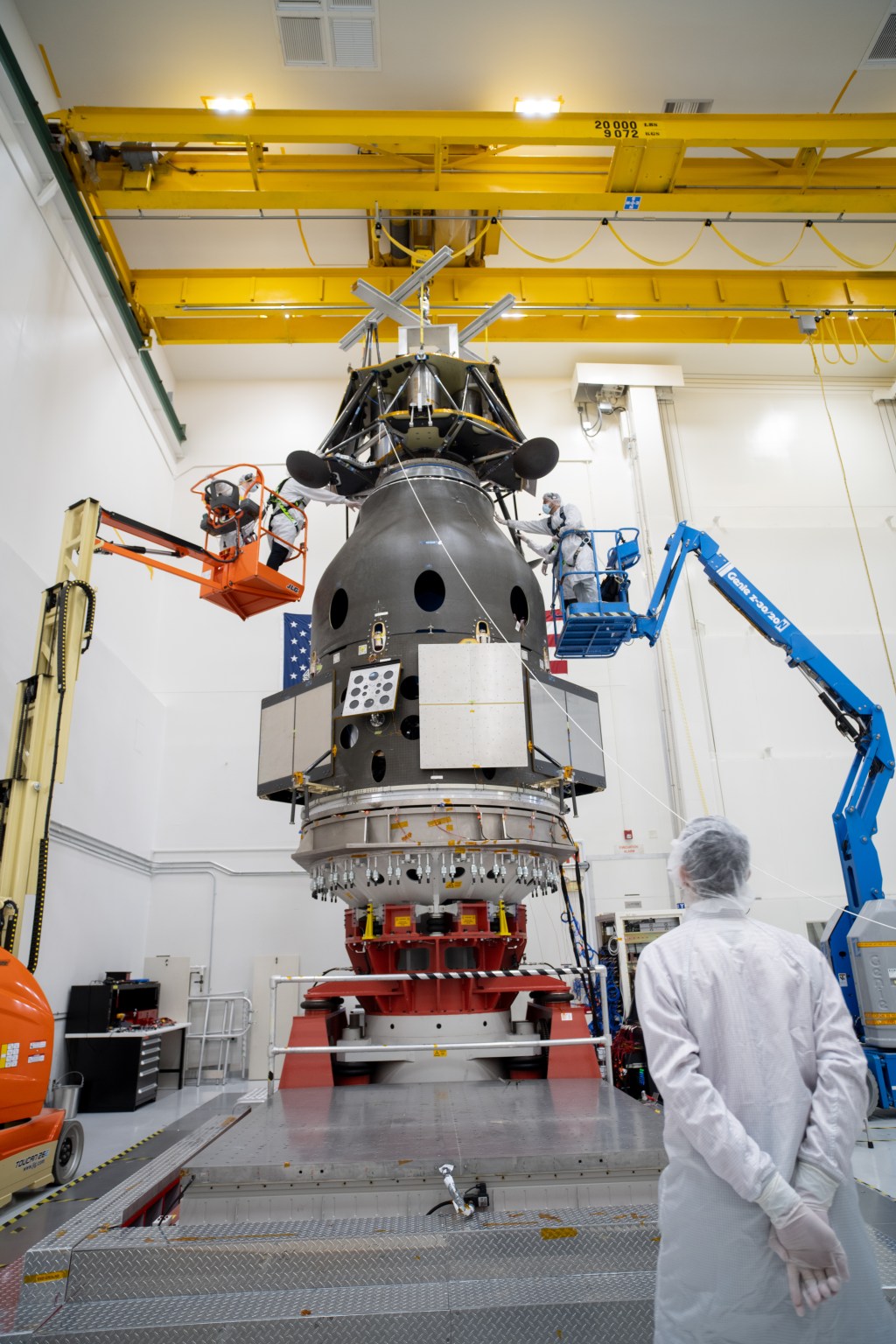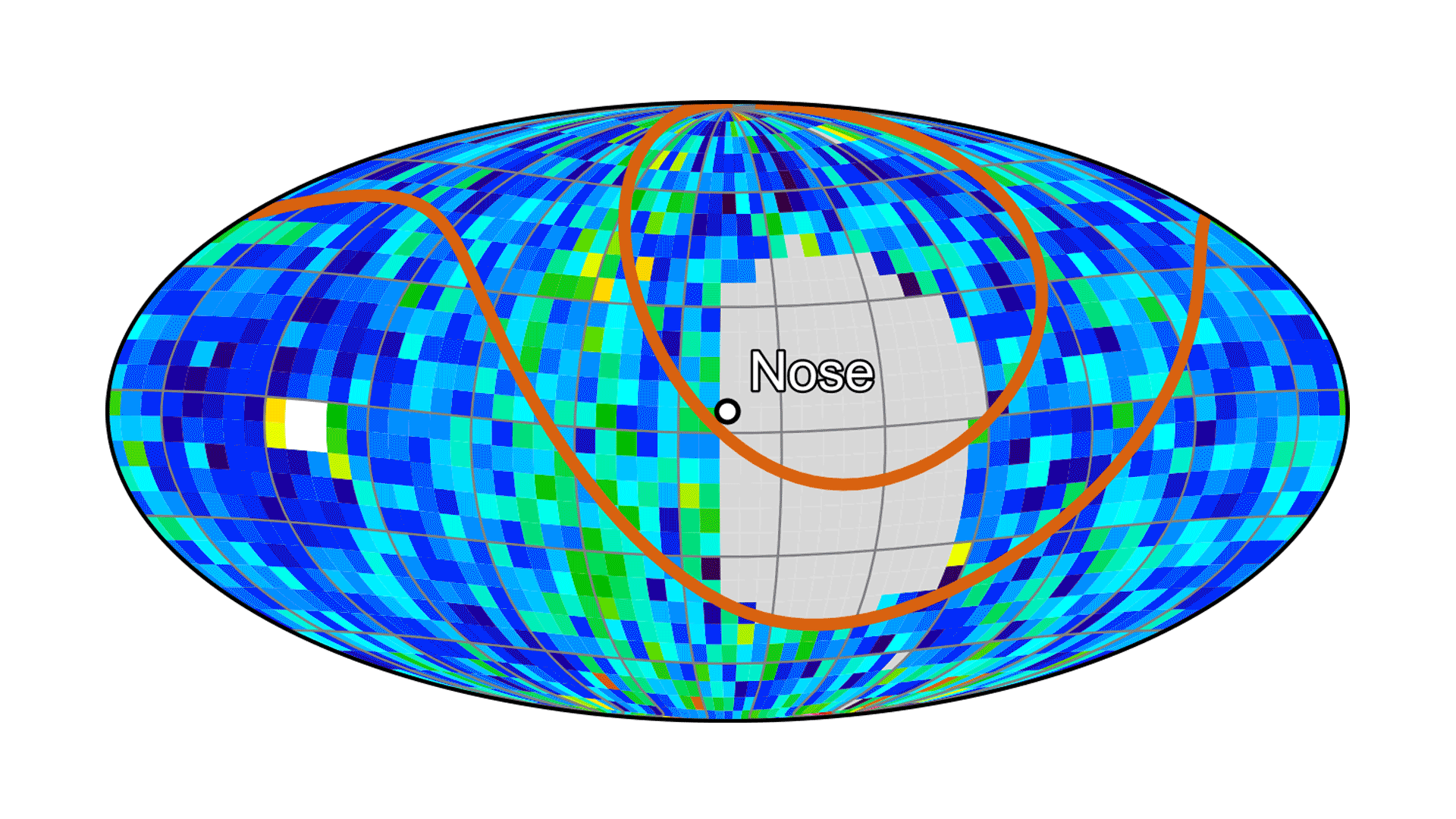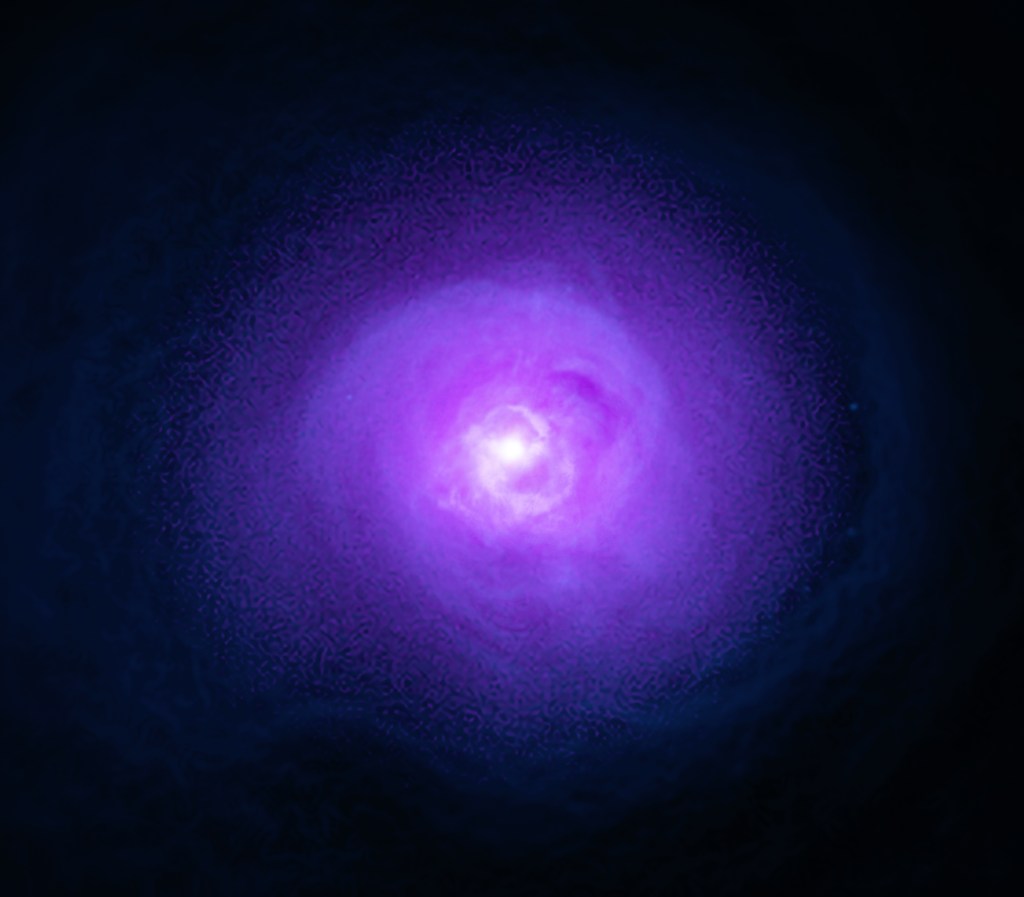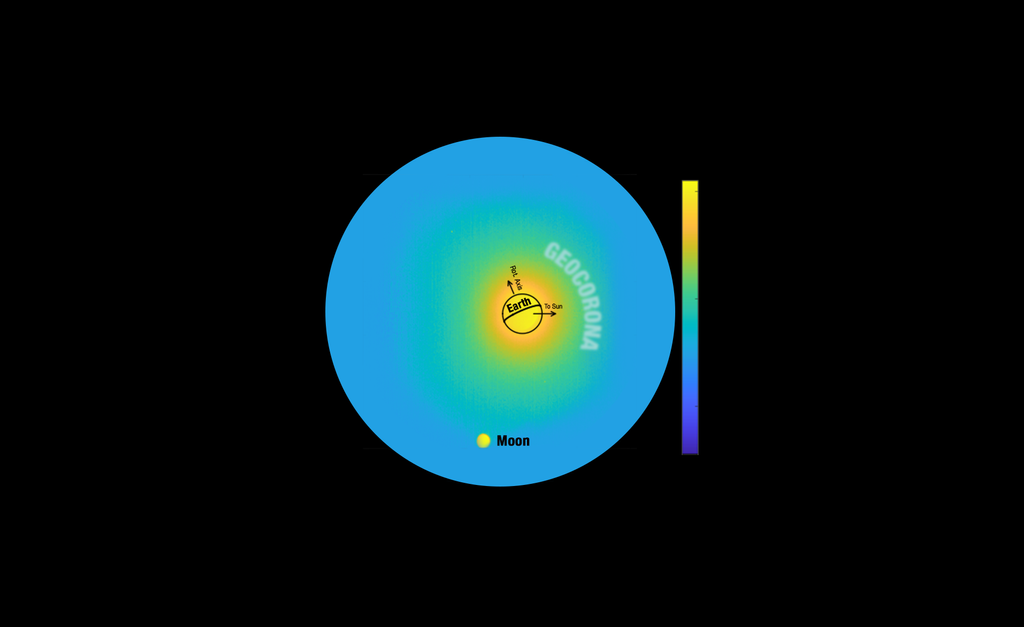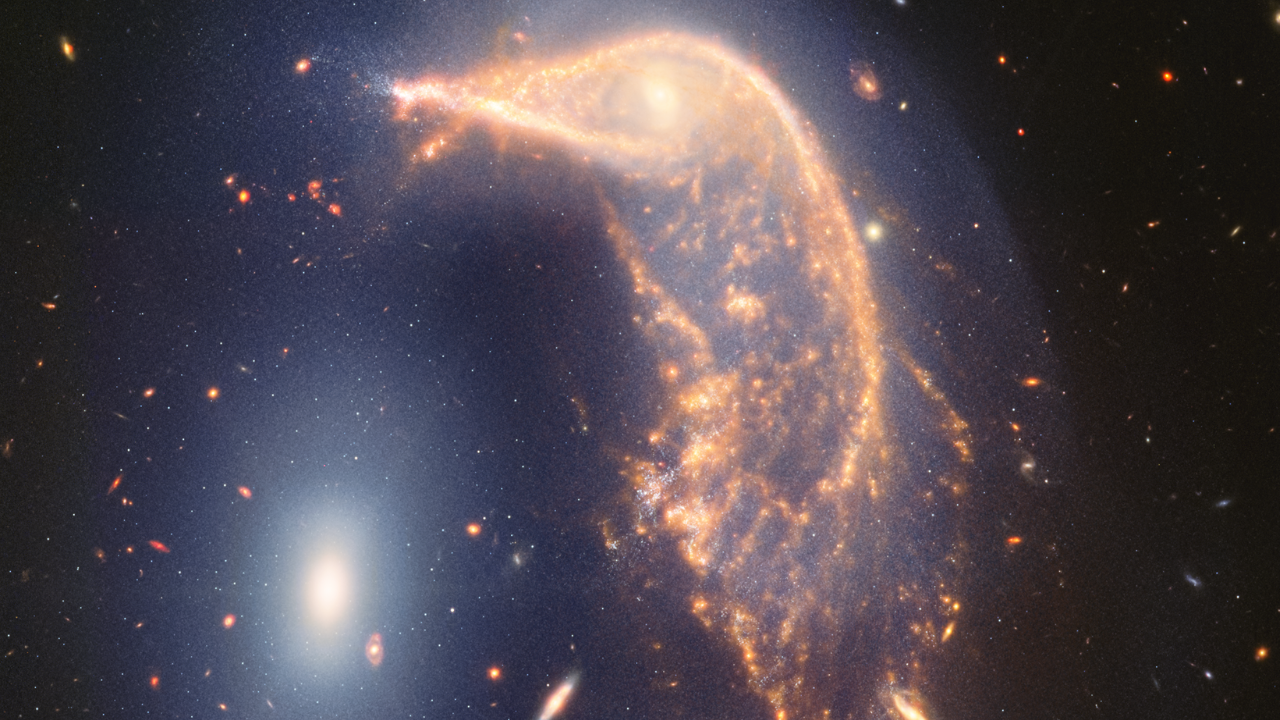1 min read
Interacting Galaxies Arp 142 (NIRCam and MIRI Image)
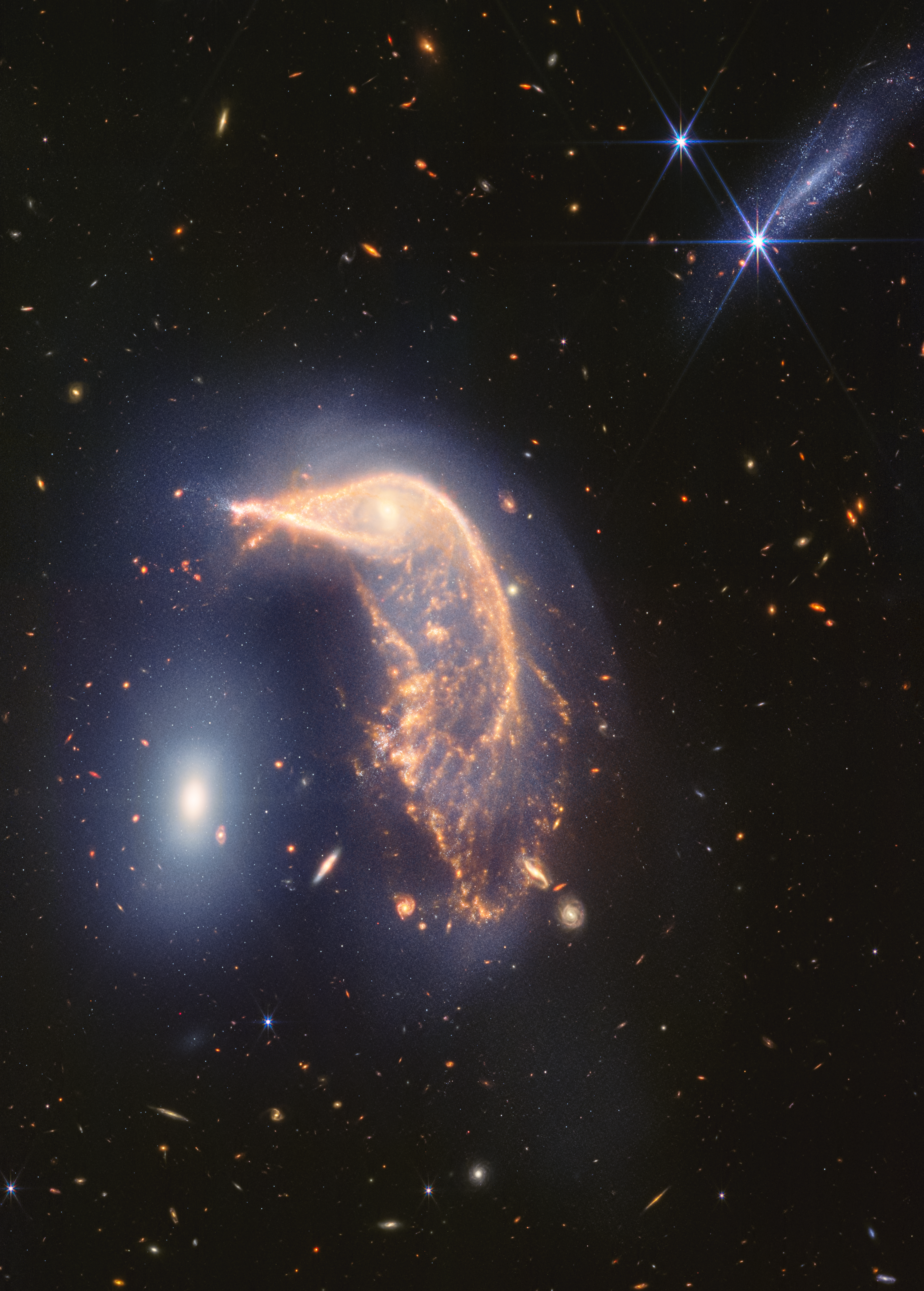
This “penguin party” is loud! The distorted spiral galaxy at center, the Penguin, and the compact elliptical galaxy at left, the Egg, are locked in an active embrace. A new near- and mid-infrared image from the James Webb Space Telescope, taken to mark its second year of science, shows that their interaction is marked by a faint upside-down U-shaped blue glow.
The pair, known jointly as Arp 142, made their first pass between 25 and 75 million years ago — causing “fireworks,” or new star formation, in the Penguin. In the most extreme cases, mergers can cause galaxies to form thousands of new stars per year, for a few million years. For the Penguin, research has shown that about 100 to 200 stars have formed per year. By comparison, our Milky Way galaxy (which is not interacting with a galaxy of the same size) forms roughly six to seven new stars per year.
This gravitational shimmy also remade the Penguin’s appearance. Its coiled spiral arms unwound, and gas and dust were pulled in an array of directions, like it was releasing confetti. It is rare for individual stars to collide when galaxies interact (space is vast), but galaxies’ mingling disrupts stars’ orbits.
Today, the Penguin’s galactic center looks like an eye set within a head, and the galaxy has prominent star trails that take the shape of a beak, backbone, and fanned-out tail. A faint, but prominent dust lane extends from its beak down to its tail.
Despite the Penguin appearing far larger than the Egg, these galaxies have approximately the same mass. This is one reason why the smaller-looking Egg hasn’t yet merged with the Penguin. (If one was less massive, it may have merged earlier.)
The oval Egg is filled with old stars, and little gas and dust, which is why it isn’t sending out “streamers” or tidal tails of its own and instead has maintained a compact oval shape. If you look closely, the Egg has four prominent diffraction spikes — the galaxy’s stars are so concentrated that it gleams.
Now, find the bright, edge-on galaxy at top right. It may look like a party crasher, but it’s not nearby. Cataloged PGC 1237172, it lies 100 million light-years closer to Earth. It is relatively young and isn’t overflowing with dust, which is why it practically disappears in Webb’s mid-infrared view.
The background of this image is overflowing with far more distant galaxies. This is a testament to the sensitivity and resolution of Webb’s infrared cameras.
Additional images of Arp 142 are available at left, under the Download Options, including a cropped image (like the one above) that features only near-infrared light, and a wider near-infrared field of view, which features an even greater number of distant galaxies.
Arp 142 lies 326 million light-years from Earth in the constellation Hydra.
Extended Description and Image Alt Text
Extended Description
Two interacting galaxies known as Arp 142 in a vertical image that combines near- and mid-infrared light.
At left is NGC 2937, which looks like a large, blue oval and is nicknamed the Egg. Its center is the brightest and most opaque, taking a whiter hue. There are six faint diffraction spikes atop its gauzy blue layers.
At right is NGC 2936, a distorted spiral galaxy nicknamed the Penguin. A beak-like region points toward and is above the Egg. Where the eye would be is an opaque, almost washed-out yellow spiral. This galaxy’s distorted orange arms form the bird’s beak, back, and tail. The tail, which is closer to the Egg, is wide and layered, like a beta fish’s tail that roughly matches the bird’s head and body. Bright orange dots line the bird’s body and tail, and are more concentrated on the side that faces the Egg.
A semi-transparent blue hue traces the entire Penguin and extends away, forming an upside-down U shape over top of both galaxies.
At top right is another galaxy seen from the side, PGC 1237172. It looks like a disk, pointing roughly at a 45-degree angle. It is largely light blue and speckled with tiny star clusters, but has a slightly more opaque, thin central line. Its length appears approximately as long as the Egg’s height. One foreground star with large, bright blue diffraction spikes appears at its lower left, and another slightly smaller foreground star appears above it.
The background is filled with tiny, extremely distant galaxies. Some take spiral or oval shapes, while others look like dots. They are largely orange and red, but a few are white. A few other foreground stars that appear as blue pinpricks with smaller diffraction spikes are scattered throughout. The background of space is black.
Image Alt Text
Two interacting galaxies known as Arp 142. At left is NGC 2937, nicknamed the Egg for its appearance. At right is NGC 2936, nicknamed the Penguin for its appearance. The latter’s beak-like region points toward and above the Egg.
About the Object
- R.A. PositionR.A. PositionRight ascension – analogous to longitude – is one component of an object's position.09:37:43.09
- Dec. PositionDec. PositionDeclination – analogous to latitude – is one component of an object's position.02:45:47.01
- ConstellationConstellationOne of 88 recognized regions of the celestial sphere in which the object appears.Hydra
- DistanceDistanceThe physical distance from Earth to the astronomical object. Distances within our solar system are usually measured in Astronomical Units (AU). Distances between stars are usually measured in light-years. Interstellar distances can also be measured in parsecs.326 million light-years
- DimensionsDimensionsThe physical size of the object or the apparent angle it subtends on the sky.Image is 2.2 arcmin across (about 210,000 light-years)
About the Data
- Data DescriptionData DescriptionProposal: A description of the observations, their scientific justification, and the links to the data available in the science archive.
Science Team: The astronomers who planned the observations and analyzed the data. "PI" refers to the Principal Investigator.This image was created with Webb data from proposal: 6564 (M. Marin); Image Processing: Joseph DePasquale (STScI)
- InstrumentInstrumentThe science instrument used to produce the data.NIRCam, MIRI
- Exposure DatesExposure DatesThe date(s) that the telescope made its observations and the total exposure time.May 6, 2024
- FiltersFiltersThe camera filters that were used in the science observations.F090W, F150W, F200W, F277W, F356W, F444W, F770W, F1000W, F1500W
- Object NameObject NameA name or catalog number that astronomers use to identify an astronomical object.Arp 142, NGC 2936 (Penguin) and NGC 2937 (Egg)
- Object DescriptionObject DescriptionThe type of astronomical object.Interacting Galaxies
- Release DateJuly 12, 2024
- Science ReleaseVivid Portrait of Interacting Galaxies Marks Webb’s Second Anniversary
- CreditImage: NASA, ESA, CSA, STScI
Downloads

These images are a composite of separate exposures acquired by the James Webb Space Telescope using the NIRCam and MIRI instruments. Several filters were used to sample narrow and broad wavelength ranges. The color results from assigning different hues (colors) to each monochromatic (grayscale) image associated with an individual filter. In this case, the assigned colors are: Red: F1500W, F1000W, and F444W. Orange: F770W and F356W. Yellow: F277W. Green: F200W. Blue: F150W and F090W.
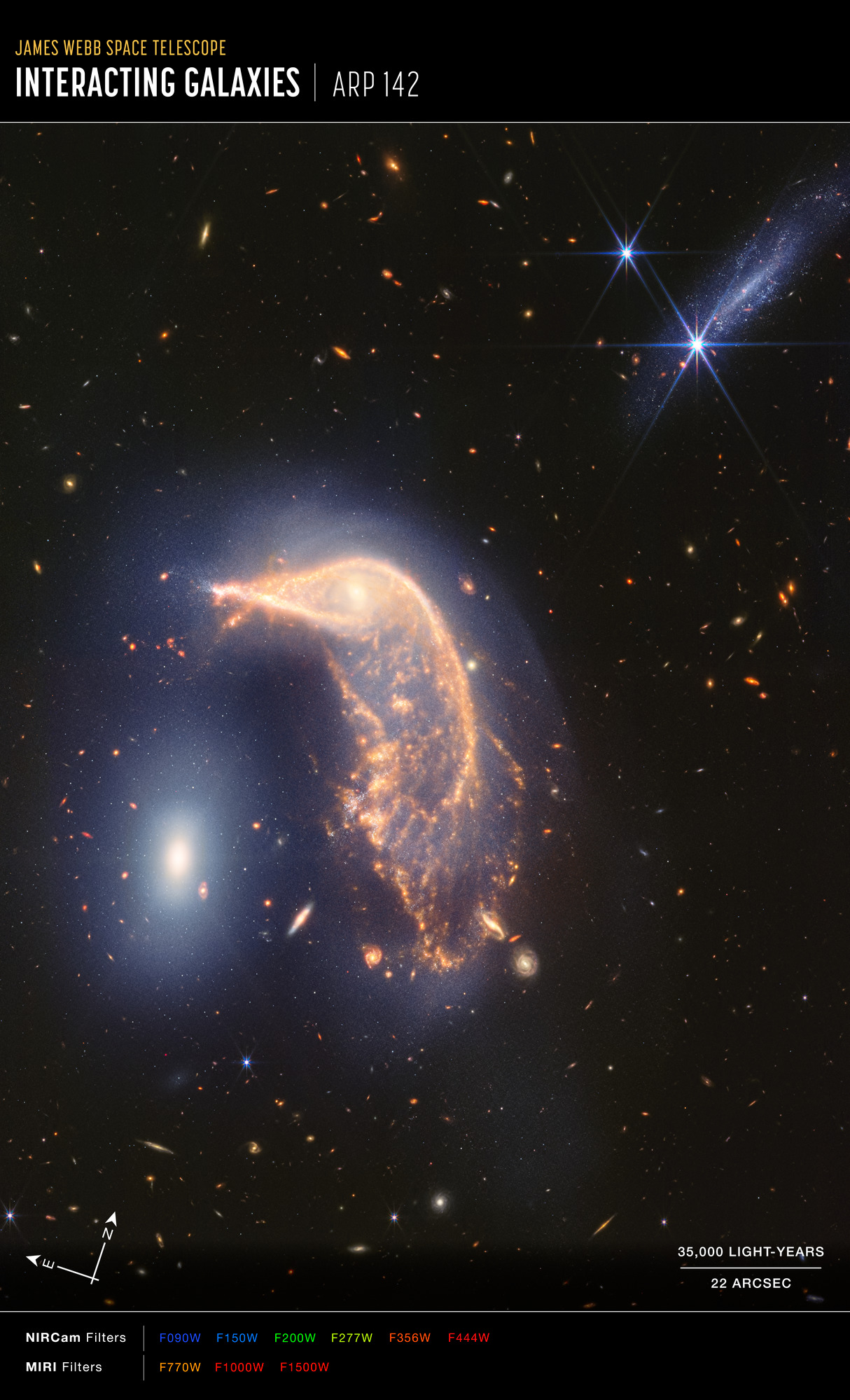
Related Images & Videos
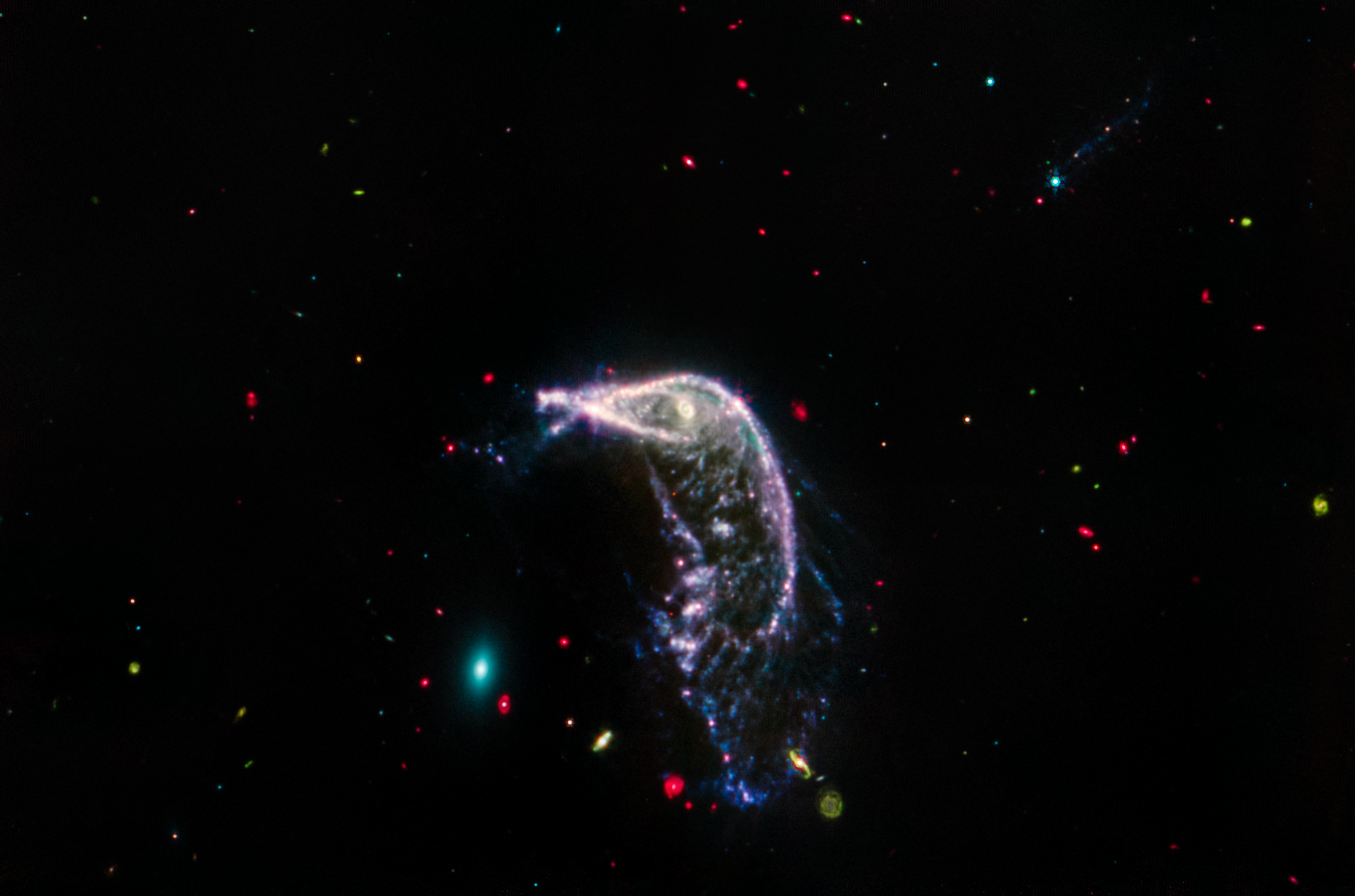
Interacting Galaxies Arp 142 (MIRI Image)
Webb’s mid-infrared view of interacting galaxies Arp 142 seems to sing in primary colors. The background of space is like a yawning darkness speckled with bright, multi-colored beads. This image was taken by MIRI , the telescope’s Mid-Infrared Instrument, which astronomers use...
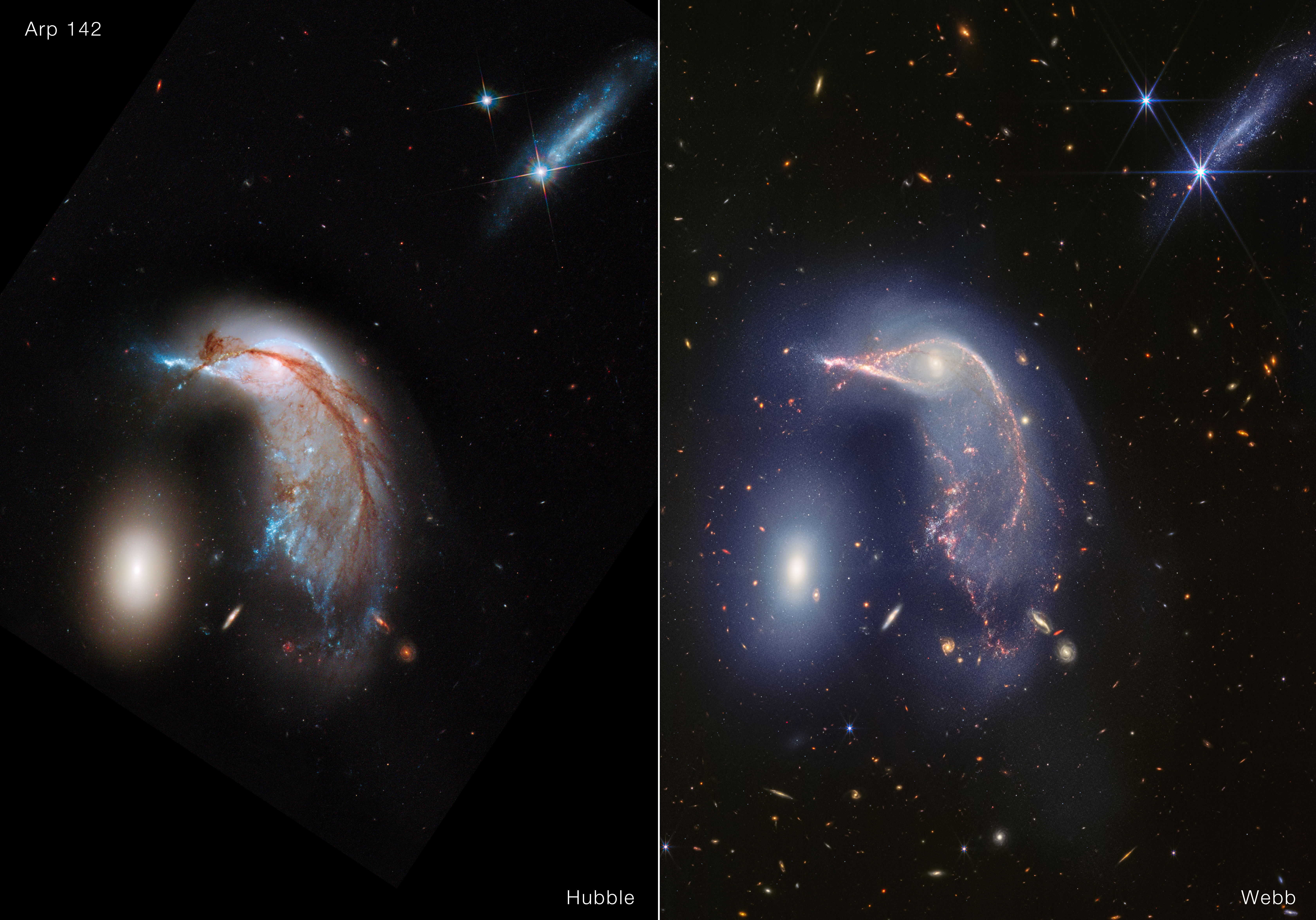
Interacting Galaxies Arp 142 (Hubble and Webb Image)
Two penguins, two eggs — two very different color schemes! The Hubble Space Telescope captured visible light when observing Arp 142, nicknamed the Penguin and the Egg, in 2013 . At right is the James Webb Space Telescope’s near-infrared light view of the same region. Both images...
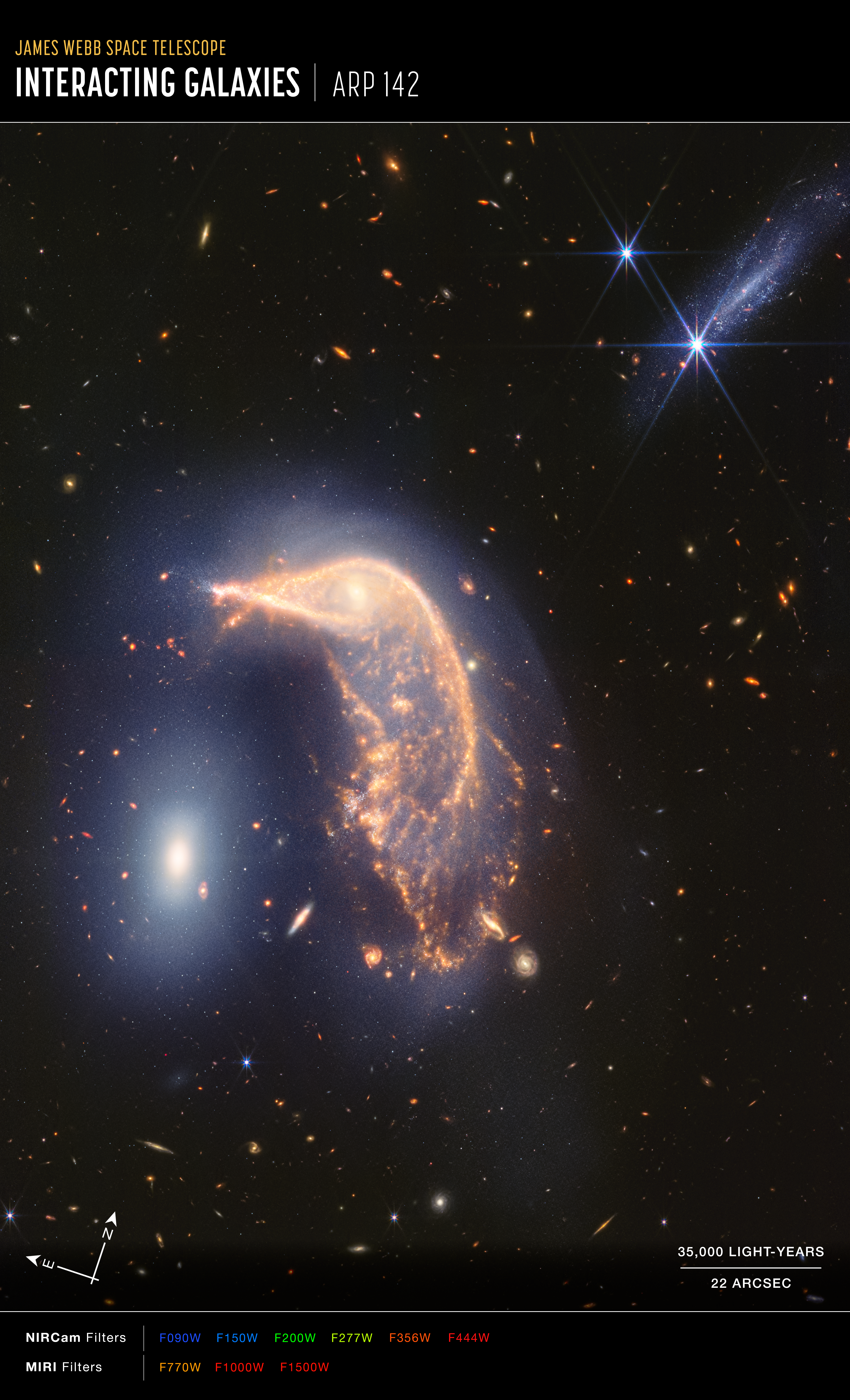
Interacting Galaxies Arp 142 (NIRCam and MIRI Compass Image)
This image of interacting galaxies Arp 142, captured by the James Webb Space Telescope’s NIRCam (Near-Infrared Camera) and MIRI (Mid-Infrared Instrument), shows compass arrows, scale bar, and color key for reference. The north and east compass arrows show the orientation of the...
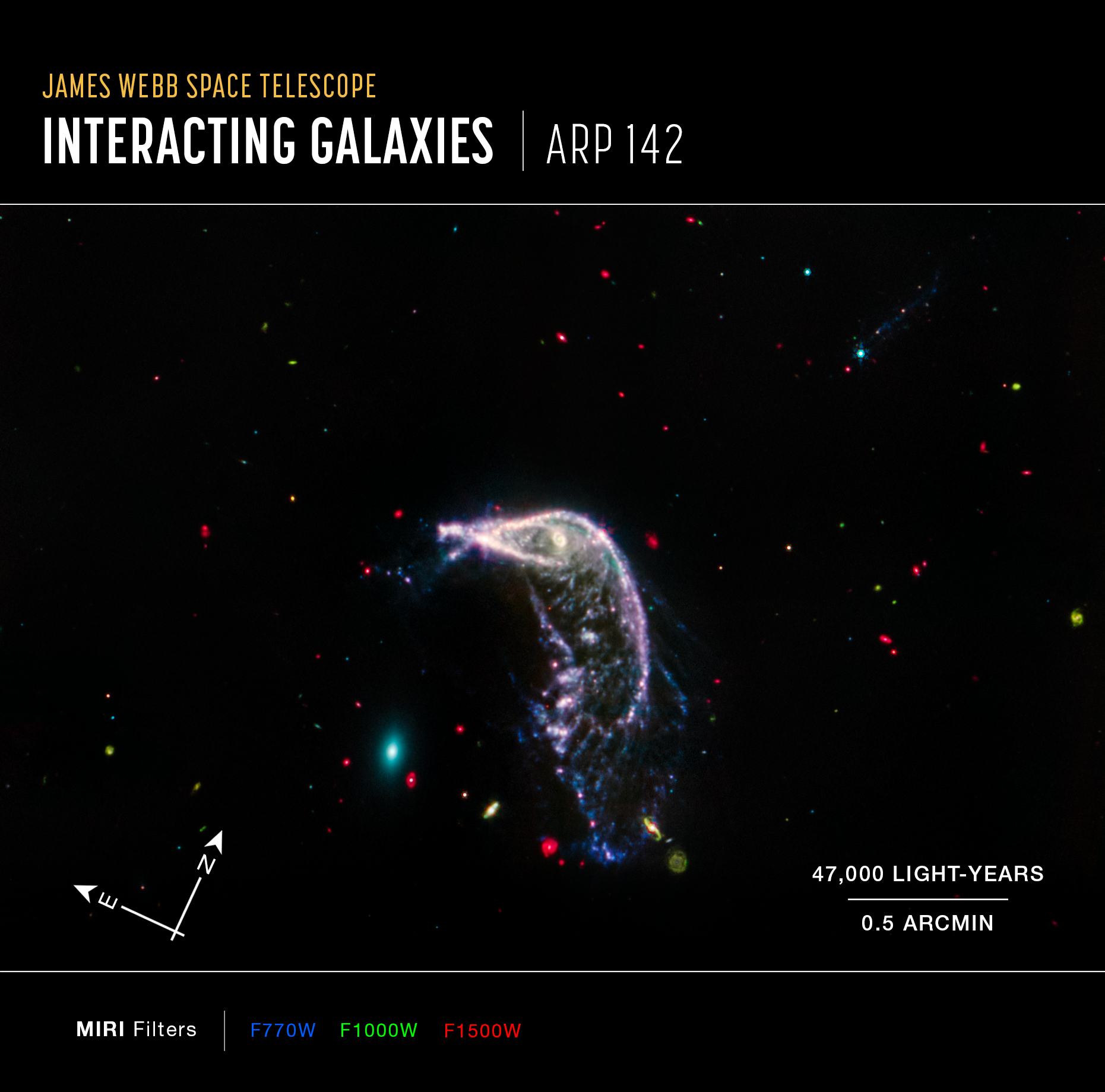
Interacting Galaxies Arp 142 (MIRI Compass Image)
This image of interacting galaxies Arp 142, captured by the James Webb Space Telescope’s MIRI (Mid-Infrared Instrument), shows compass arrows, scale bar, and color key for reference. The north and east compass arrows show the orientation of the image on the sky. Note that the...
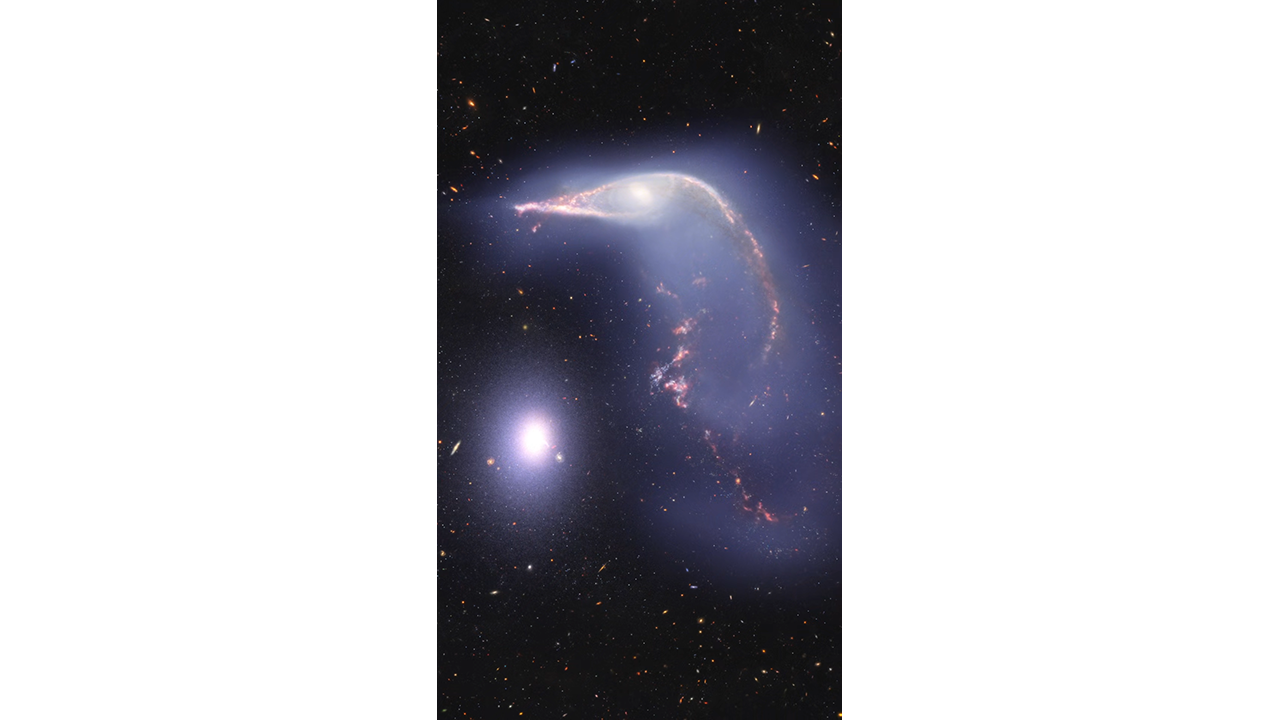
Arp 142 Visualization
This visualization examines the three-dimensional structure of Arp 142, a pair of interacting galaxies nicknamed the Penguin and the Egg, as seen in near-infrared light by the James Webb Space Telescope. The Penguin, a spiral galaxy cataloged as NGC 2936, has passed by the Egg,...
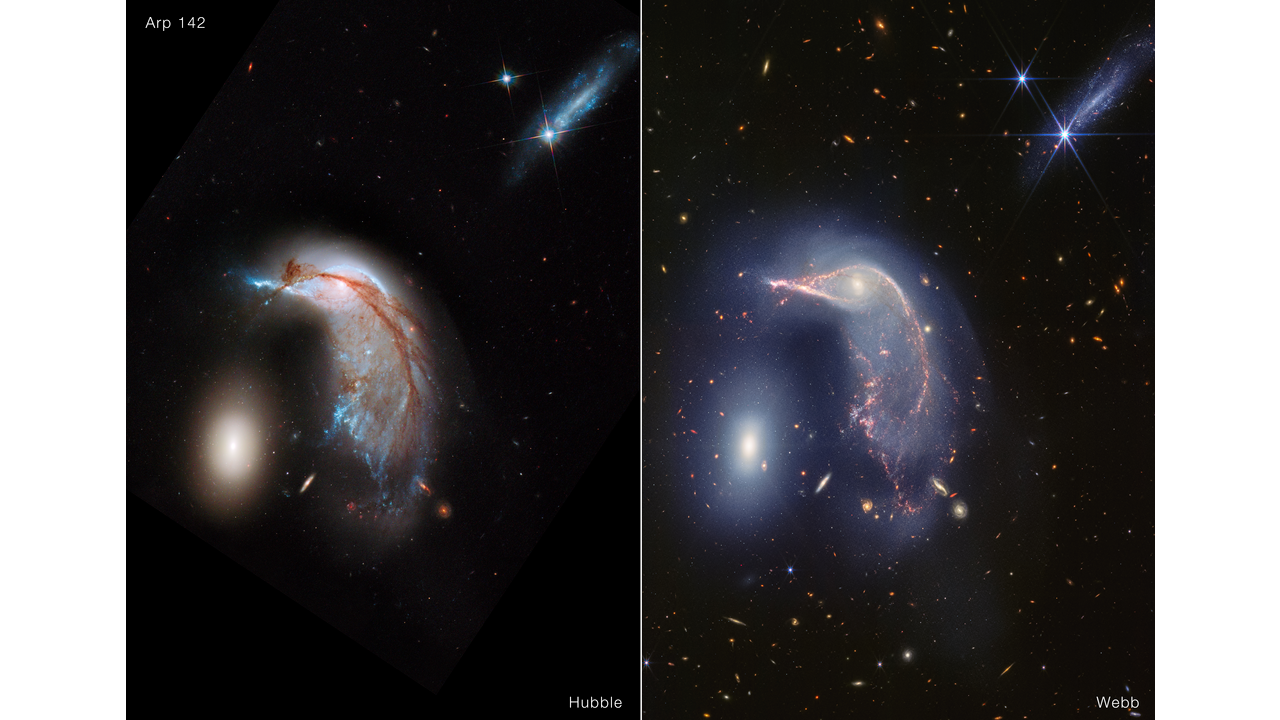
Arp 142 Hubble to Webb Fade
This video compares images of two interacting galaxies cataloged Arp 142, nicknamed the Penguin and the Egg. The first image is in visible light, and was captured by the Hubble Space Telescope’s Wide Field Camera 3 (WFC3). The second shows near-infrared light observed by the...
Share
Details
Laura Betz
NASA’s Goddard Space Flight Center
Greenbelt, Maryland
laura.e.betz@nasa.gov
NASA, ESA, CSA, STScI











